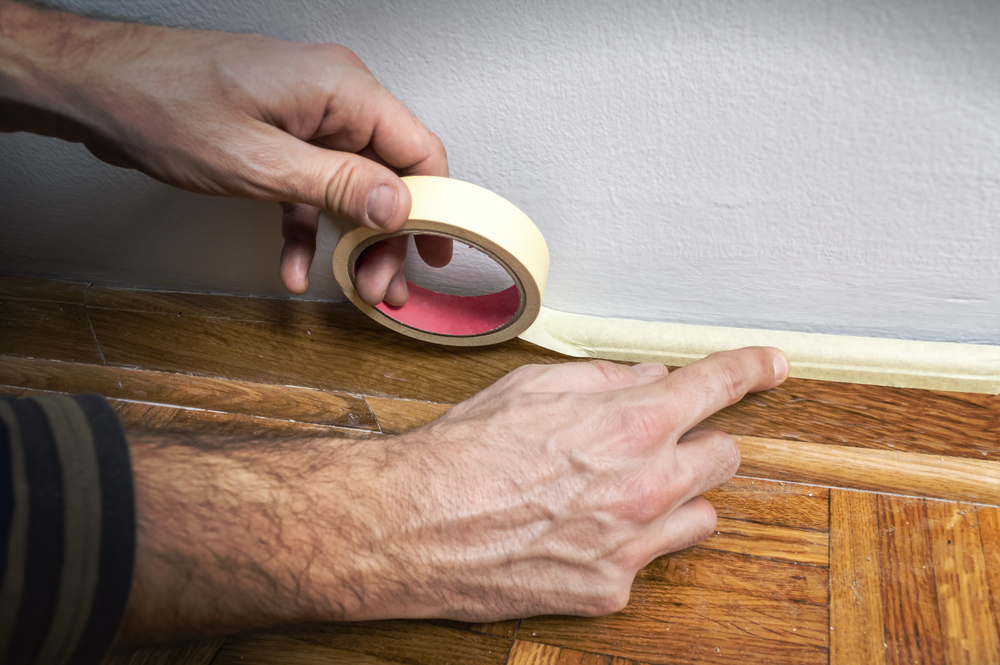 A kitchen is the most functional and utilized space of the house, often overlooked for renovation. Painting the kitchen will give it a refreshed shimmer. Somehow or another, painting the kitchen is a more straightforward venture than painting rooms or lounges because of how much divider space will, in general, be restricted. Most of a kitchen's divider space is overwhelmed by base cupboards, divider cupboards, and backsplashes. The drawback, the small region that still needs to be painted ordinarily needs general cleaning and prep work.
A kitchen is the most functional and utilized space of the house, often overlooked for renovation. Painting the kitchen will give it a refreshed shimmer. Somehow or another, painting the kitchen is a more straightforward venture than painting rooms or lounges because of how much divider space will, in general, be restricted. Most of a kitchen's divider space is overwhelmed by base cupboards, divider cupboards, and backsplashes. The drawback, the small region that still needs to be painted ordinarily needs general cleaning and prep work.To help you paint your kitchen walls in just the right way, I have gathered five excellent tips for you to follow.
First Thing First Clean Your Kitchen Wall Before Painting
Kitchen dividers and surfaces are often greasy due to the fumes during cooking. So, make sure before you begin painting, clean all the surfaces thoroughly to guarantee that you get a proper completion as the paint won't stick to the greasy surface nicely.Any broken, chipping, or stripping regions should be gently sanded or scratched (and afterward thoroughly washed) before applying new preliminary and paint because the heaviness of the fresh coat will pull the old paint free. If you don’t clean your walls beforehand, you may end up losing a lot of money.
Oily spots may likewise require a touch of washing with a cleanser, trailed by a flush with clean water. In any case, wipe down with a soggy material so that paint will have a perfect, sans dust surface to adhere to. An ideal way to do this is to clean them down with a sugar cleanser or a solid cleanser arrangement. Utilize warm water and thoroughly wash off all buildup before drying the surfaces.
Prepare Your Room – Mask And Cover Your Things
Concealing and covering are not required for the vacant room with no completed floor. Paint trickles on the subfloor will be covered by the floor covering. On the off chance that utilizing a paint sprayer, make sure to wrap plastic over ways to neighboring rooms to keep paint fog from moving.Before starting to paint a room with different things in it, make sure to cover the edges of any tiles, appliances, trim, and worktops with masking tape. Using masking tape will help you create a clean edge on the painted surface. Also, don't forget to cover worktops, appliances, and the floor with a plastic sheet to catch any drips.
You won't ever lament the time you spend covering floors, furniture, and equipment before you start a paint project. Drop fabrics are an absolute necessity, and little plastic sandwich sacks with tape are a simple method for safeguarding door handles.

Plan Your Work Properly – Start Painting From The Ceiling
Similarly, as with any room, begin painting your kitchen starting from the ceiling so that any paint dribbles don't fall onto newly painted surfaces. For roofs and dividers, use kitchen paint as these are hard-wearing and intended to be cleaned down without any problem.A standard vinyl paint can be involved on roofs as they shouldn't be washed as consistently. You might find it simpler to paint more modest surface regions and edges with a brush rather than a roller.
Also, make sure to work in dry environments, as humid may not be the best time. Moistness implies dribbles and slow drying, so try not to paint on a stormy day. If you should paint when it's muggy, take as much time as necessary - and exploit slow-drying paint to address your blunders before continuing to the following coat.
Make Sure To Choose A Kitchen Paint Color Wisely
The kitchen stands out enough to be noticed, so pick your kitchen paint tones shrewdly. The best kitchen tones will often have a high visual effect and line up with the possibility of food and eating.Consider painting texture as you would the range of tones on a paint fan. However, the content isn't tones yet degrees of reflexivity in the kitchen: matte (level, non-glossy) toward one side and severe shine (so sparkly you can nearly see your face) at the opposite end. Glossy silk and semi-sparkle will often be top picks as the best paint finish for the kitchen, while matte is seldom prescribed because it is challenging to clean, and dots of dampness will cause streaks.
Spend A Little Extra To Have A Well-done Finish
Assuming you're going a little overboard on extraordinary paint, you most certainly don't have any desire to save every possible dollar on the application. Great brushes and roller covers give great inclusion, so you don't sit around and paint on re-application, and excellent quality painter's tape is needed to fix all the drips and blurs.










تعليقات (0)
اترك تعليقا